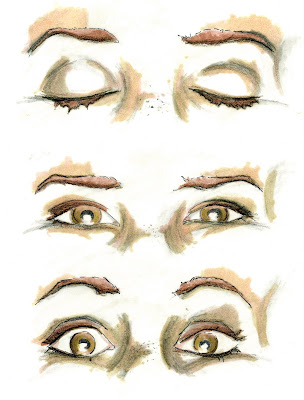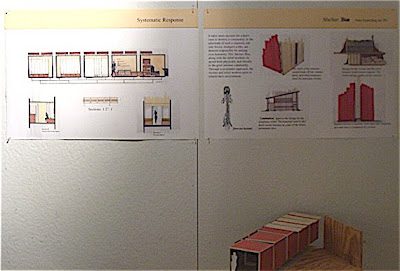
Wednesday, December 24, 2008
Gifts

Friday, December 19, 2008
One Is the Loneliest Number That You'll Ever Do!
Tuesday, December 16, 2008
Sunday, December 14, 2008
Wednesday, December 10, 2008
Design.Everything

- Alarm Clocks- I have a fixation with retro clocks and hence the reason why I have so many. They display the perseverance of technological demand, and in turn have far more character.
- Music- Specifically movie scores, music is essential in my design process. It allows me to cancel the surrounding noise, and concentrate. Also, ideas complemented with music produce organic, whimsical designs.
- The real first art class I toke was a high school ceramics class. It taught me rudimentary design skills, and allowed me to interprate my design in tangible forms.
- Aspen, Colorado- Colorado is another world. Its clarity and openness is conducive to design free of unnecessary elements.
- Childhood Backyard- My mom encouraged my sister and I to use outdoors as a playful pastime.
- Elise- my sister is a large part of my inspiration. I’ve always looked up to her for her artwork; she is very talented.
- Gamble House- The intricacy of the Arts and Crafts Movement is fascinating. The high craft and attention to detail inspires me to push for high-quality technique.
- Merchandise Mart- It was seeing this building in Chicago that sparked my interest in sustainable preservation. Merchandise Mart is the largest and oldest Green Building In the United States. It shows that sustainable design does not have to be new design.
- Baltimore Aquarium- this building is one of the most memorable buildings I’ve been to. Flowing from one room to the next, way finding goes hand in hand with the exhibit tanks.
- Windmill- The Windmill Inn in Wraysbury, England was the first inn I stayed in while outside of the country, lucky for me; it was a converted windmill. England opened my eyes to a different world of design; everything about it was a new experience, starting with the very space I stayed in.
Monday, December 1, 2008
Systematic Response
While researching, I was drawn to the design of the human body. It is both intricate and very easy to relate to. The appeal of unification brought me to the nervous system. Essentially, it is a central call and response network. Feelings, ideas, sense, all depend on the nervous system. It is comprised of small components that branch out from a central station. The interior of the bus consists of systematic design. The space is open, divided only by a system of glass panels. The panels designate appropriate space for the relief workers and their needs; there is enough privacy without creating separation. There is nothing in the space that is not composed of smaller entities. Each scale is taken into consideration from the most detailed, to the most broad. For example, the color choice is based on layers and mixing; a system is used when processing secondary colors for they are a combination of primary. The wood in the structure embraces the grain and blemishes, displaying the systems and beauty found in nature. On a larger level, each portion of the bus is connected by, not only a datum line, but a series of glass encasings. The glass unites the structure, all the while highlighting the separation of spaces. There is not one piece in the composition of the bus that does not contribute to the greater whole.
. After the bus responds to the community, the remaining core would be a statement in itself. It is the brain of the operation; the workers reside there, as well as respond from there. Though obscured by the outer shell, it was present throughout, simply more so after the process concludes. Essentially, the core, or brain of the bus would remain, and the shell, or nerves of the bus would forever be dispersed throughout the community.
Diagram




















